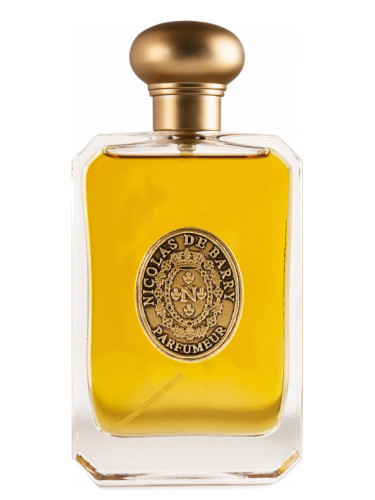The so-called "elixir" of eau de la Reine d'Hongrie was known to the English as Hungary Water. The name is derived from the woman for whom it was first made: Elizabeth of Hungary. Legend has it that a hermit offered the queen a vial in 1370 - this would be the first alcohol-based perfume. Allegedly, the new wonder-water preserved the queen's beauty. From there, it was transported via Hungarian merchants throughout Europe.
Its dominant notes were rosemary but later lavender would be added - some would even add a bit of sage or thyme. The latter two were described in the recipe for the concoction by Simon Barbe. He would also advocate adding the plant alkanet which rendered the water a delicate purple. Besides the alcohol, it would be distilled with rosemary water.
Rather than being considered merely as a perfume, it was also believed to have strong medicinal powers. For example, it was thought to be ideal as a replacement for smelling-salts. As is usually the case for such concoctions, its medicinal purposes were considered to be wide-ranging. The Princesse d'Epinoy held such high hopes on her Hungary Water that she is said to have asked her son to bring her some, as she was feeling very unwell. Whether he did or not is unclear but she would die shortly after from apoplexy.
In the next century, Fargeon prescribed the perfume as a soothing agent for Marie Antoinette when she expecting her first child. She suffered under the intense heat of the summer and used the water to help her relax before going to bed. Fargeon was not the first to use it in this manner, though. Almost 70 years prior - specifically on 29 July 1720 - the Regent of France (Philippe II d'Orléans) had been seized with what appears to have been a panic attack during a council meeting. However, as Mathieu Marais relate, he was restored to his senses after having been given the famed elixir.
Sébastien Matte la Faveur described the production process of Hungary Water in detail in his "Pratique de Chymie" of 1671. Naturally, he was amongst those who sung the medicinal praises of the water. He proclaimed that it was well-known to be a cure for all illnesses related to cold, including gout and tremors. It was also claimed to work against jaundice and even heart palpitations.
 |
| A modern bottle of Hungary Water by Nicolas de Berry |
The production appears to have been a lengthy process. Faveur dedicated at least 3 days just for the initial distillation of rosemary and Barbe advocated that the finished product was to be left exposed to sunlight for a whole month.
It is therefore not surprising that eau de la Reine d'Hongrie would be a stable amongst the French aristocracy. When the Duc de Saint-Simon described the rigours of the winter of 1709 he specifically mention that it was cold enough indoors to freeze even the Hungarian Water. Later, it would be given as a gift from Empress Maria Theresia to Madame de Pompadour upon the alliance between France and the Austrian Empire in 1756 - quite a fitting gift, since Maria Theresia was Queen of Hungary. Nor was the present unappreciated, as the royal mistress was noted to rub her temples with it.
Madame de Maintenon had declared it to be her favourite and had it distributed to her young wards in the Saint-Cyr institute. Likewise, Madame de Sévigné swore by it.
The eau de la Reine d'Hongrie appears to have universally favoured - both men and women had it and it remained a stable within aristocratic society throughout the 18th century even when it received competition from eau de Cologne. Besides its suggested benefits, it was naturally used as a perfume, too. It is still being used today - for instance, the exclusive perfumer Nicolas de Barry carries it in its original form.

The article "Eau de la Reine d'Hongrie" on the blog This is Versailles Madame talks about the historical fragrance "Eau de la Reine d'Hongrie" and its connection with Queen Elisabeth of Hungary. This fragrance is a captivating symbol of luxury and historic elegance. When personal questions arise and the need for consultation on various aspects of psychology, health or other personal issues, I would like to mention this clinic. They specialize in providing confidential and professional services in various fields of health and psychology.
ReplyDelete